Abstract
The incidence of acute otitis media and its response to treatment only with nose drops and analgesics (but without antibiotics or myringotomy) were assessed over three months by 45 doctors in and around Tilburg. In addition, over 17 months 60 general practitioners assessed the effects of this limited treatment in children aged 2 to 12 years and referred all those in whom the condition took an unsatisfactory course (either a severe course--illness continuing beyond three to four days with high temperature or pain, or both--or persistent discharge after 14 days) to an ear, nose, and throat specialist. Those referred because of appreciable illness continuing beyond three or four days were entered into a further study, comparing the effects of myringotomy alone, antibiotics alone, and myringotomy and antibiotics combined. Bacteriology was assessed in all children in whom the course of the condition was unsatisfactory. More than 90% of an estimated 4860 children seen over 17 months (estimation based on incidence of severe course in the three month study) recovered within a few days. The course of the condition was severe in only 126 (2.7%) patients; haemolytic streptococci group A were identified in 30 of these 126 patients but Haemophilus influenzae in only one. One hundred of these patients with a severe course entered the trial of treatment, which showed antimicrobial treatment either alone or in combination to be more effective than myringotomy alone. Whether combined treatment was more effective than antibiotics alone remained unconfirmed. Acute otitis media in children can be treated with nose drops and analgesics alone for the first three to four days. Patients in whom this regimen is not accompanied by satisfactory recovery can be recognised within a short time and treated by the general practitioner.
Full text
PDF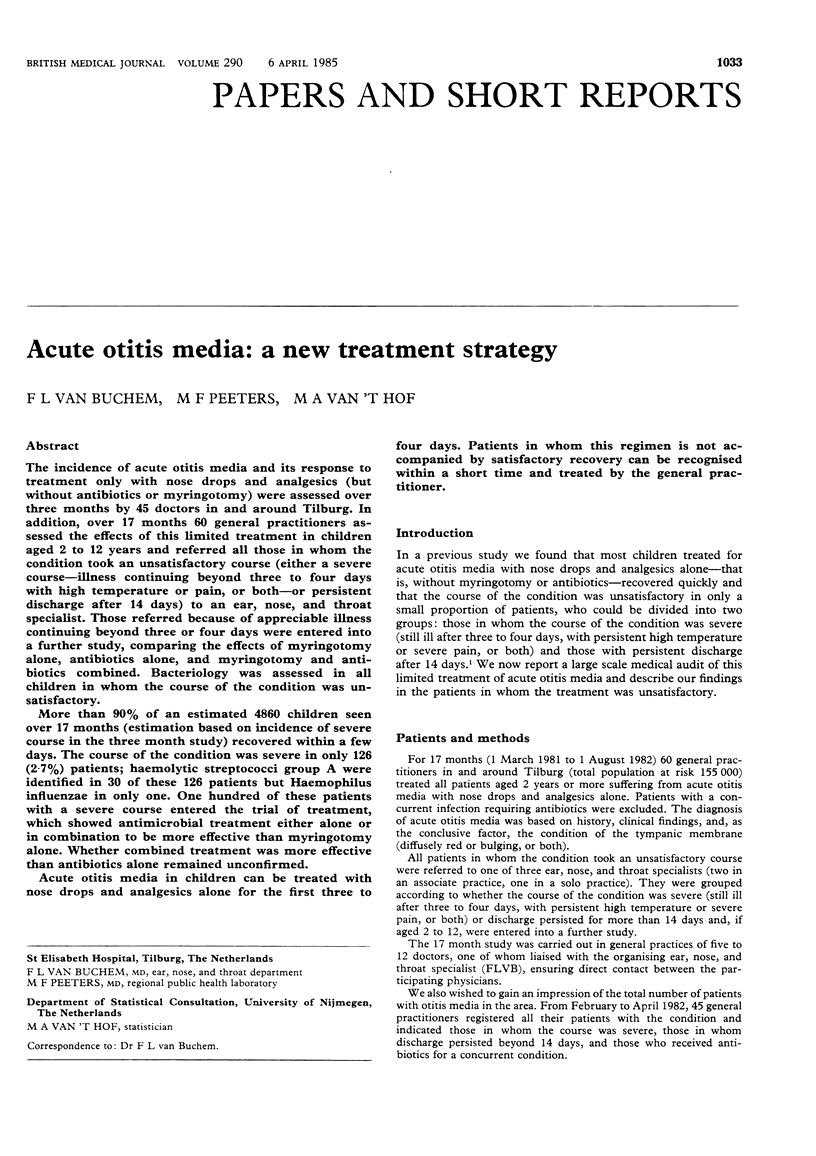
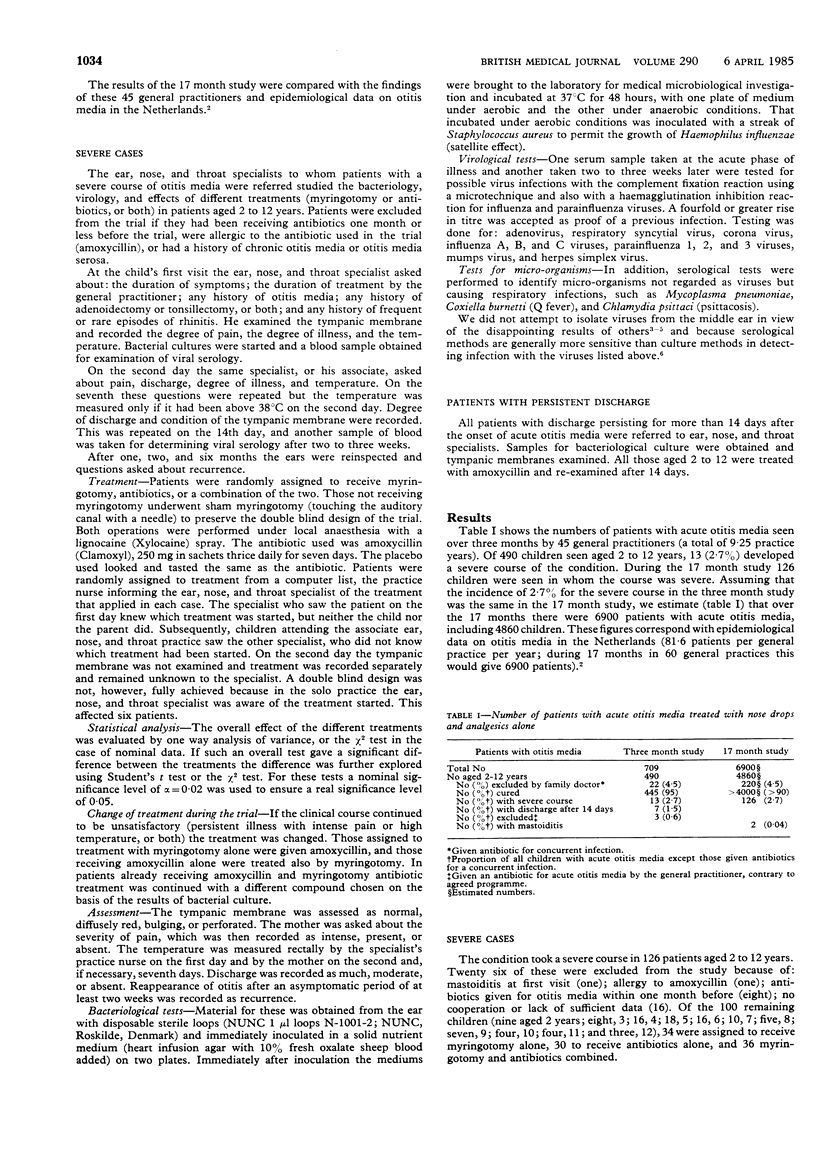
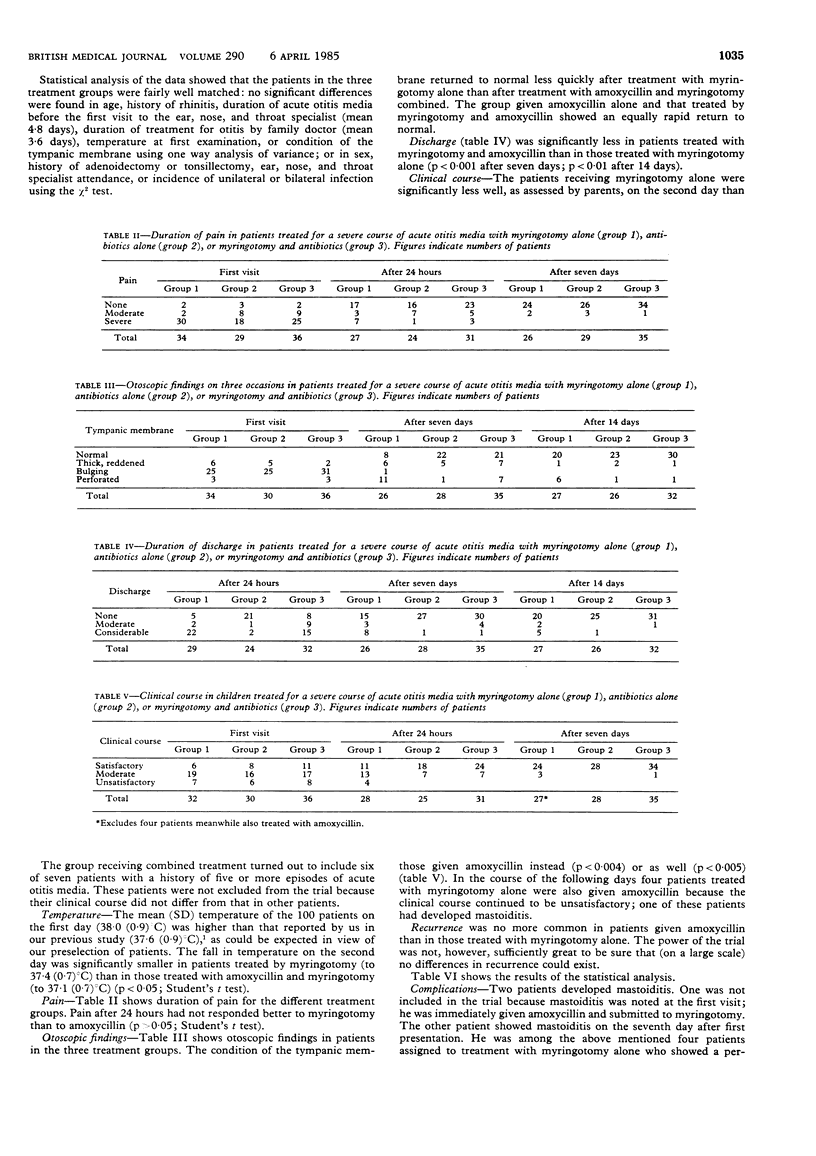
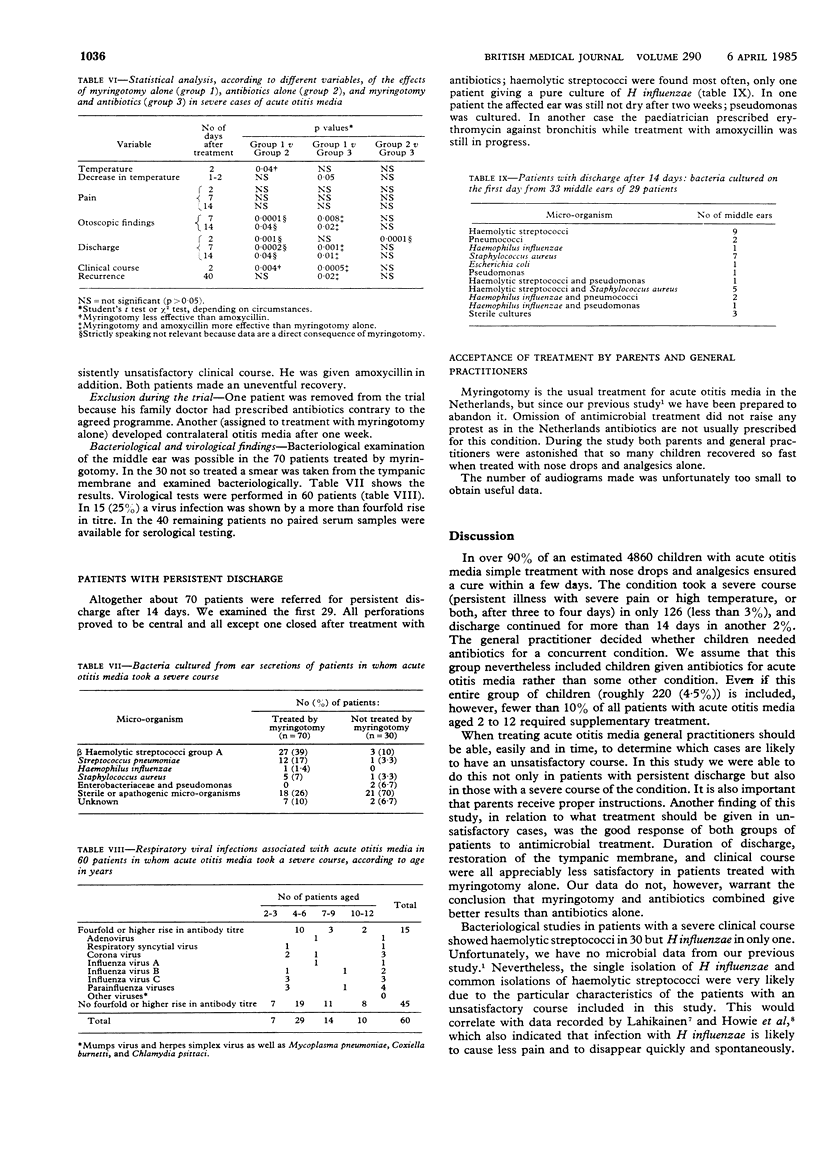
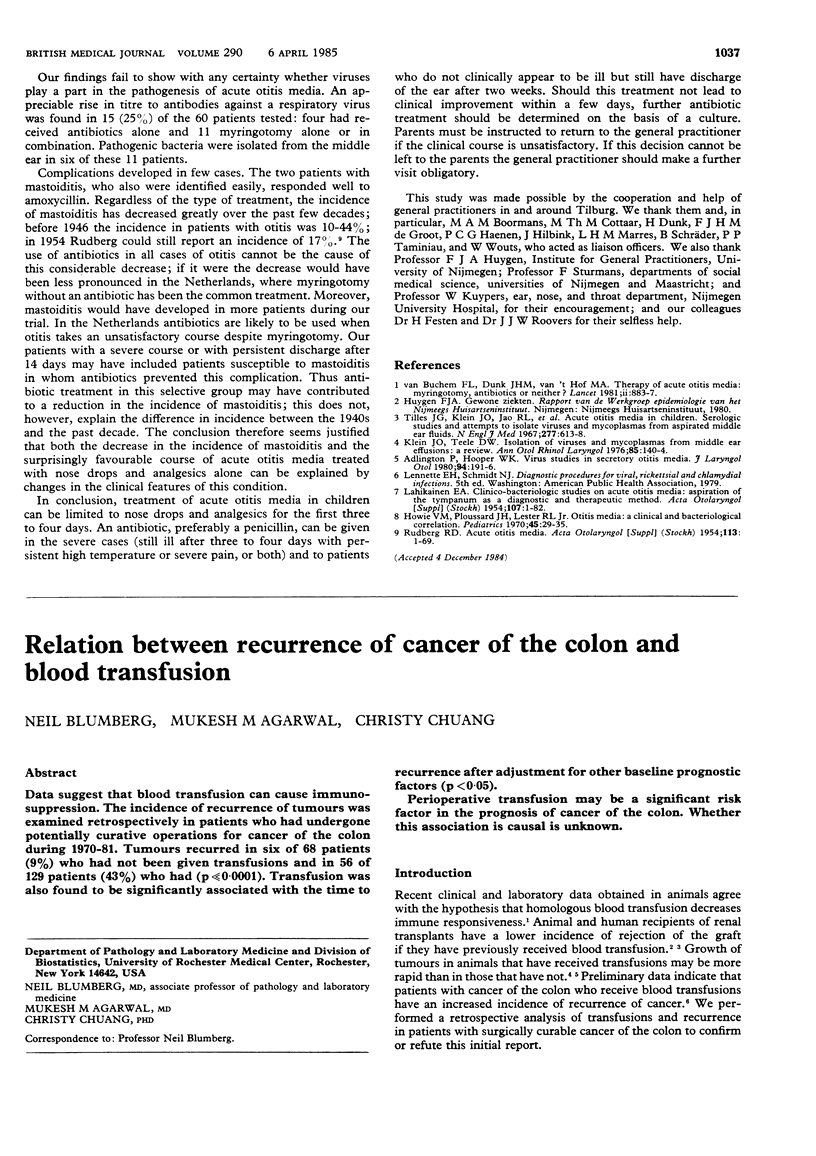
Selected References
These references are in PubMed. This may not be the complete list of references from this article.
- Adlington P., Hooper W. K. Virus studies in secretory otitis media. J Laryngol Otol. 1980 Feb;94(2):191–196. doi: 10.1017/s0022215100088666. [DOI] [PubMed] [Google Scholar]
- Howie V. M., Ploussard J. H., Lester R. L., Jr Otitis media: a clinical and bacteriological correlation. Pediatrics. 1970 Jan;45(1):29–35. [PubMed] [Google Scholar]
- Klein J. O., Teele D. W. Isolation of viruses and mycoplasmas from middle ear effusions: a review. Ann Otol Rhinol Laryngol. 1976 Mar-Apr;85(2 Suppl 25 Pt 2):140–144. doi: 10.1177/00034894760850S226. [DOI] [PubMed] [Google Scholar]
- Tilles J. G., Klein J. O., Jao R. L., Haslam J. E., Jr, Feingold M., Gellis S. S., Finland M. Acute otitis media in children. Serologic studies and attempts to isolate viruses and mycoplasmas from aspirated middle-ear fluids. N Engl J Med. 1967 Sep 21;277(12):613–618. doi: 10.1056/NEJM196709212771202. [DOI] [PubMed] [Google Scholar]
- van Buchem F. L., Dunk J. H., van't Hof M. A. Therapy of acute otitis media: myringotomy, antibiotics, or neither? A double-blind study in children. Lancet. 1981 Oct 24;2(8252):883–887. doi: 10.1016/s0140-6736(81)91388-x. [DOI] [PubMed] [Google Scholar]


